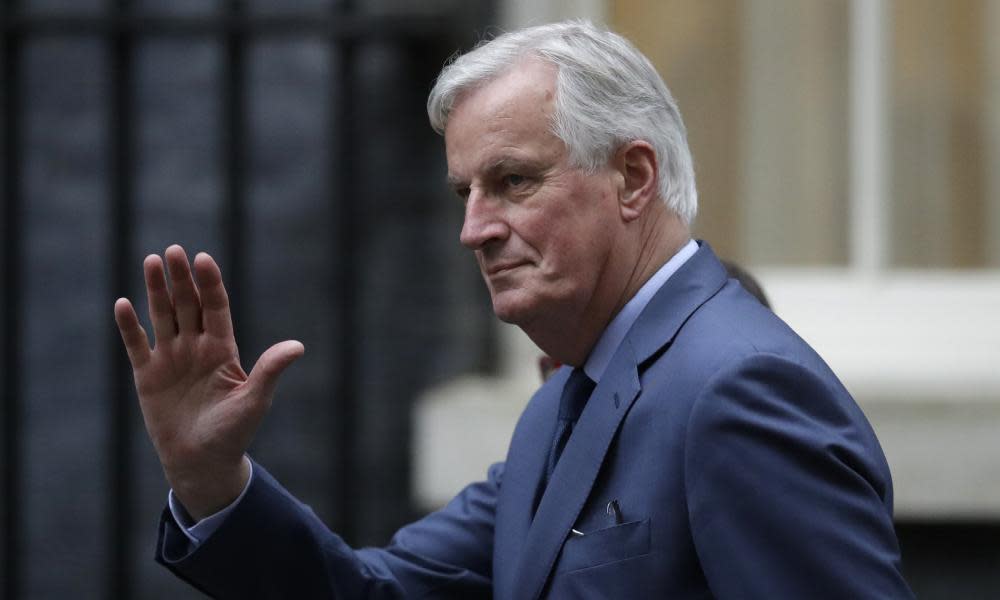Post-Brexit trade talks: what are the next steps?

Brexit negotiations to secure the future relationship between the UK and the EU start next Monday.
What’s next?
European affairs and foreign affairs ministers meet in Brussels to rubber-stamp the negotiating goals approved in Brussels on Monday.
At the same time Boris Johnson is to convene a meeting on Tuesday of the UK’s exit strategy team (XS) to discuss the EU paper and finalise the UK’s own mandate, which will be published on Thursday.
The XS team is made of up Johnson; the chancellor, Rishi Sunak; the foreign secretary, Dominic Raab; Michael Gove, the chancellor of the Duchy of Lancaster; and the attorney general, Suella Braverman – all ardent Brexiters.
Related: Brexit: EU and US trade deals 'at risk' if UK reneges on Northern Ireland pledges
Expect no let-up in the war of words, with the UK trying to control the narrative in a way Johnson and his special adviser, Dominic Cummings, feel Theresa May failed to do.
This means continued demands for access to the EU market without conditions such as alignment with EU regulations and continued rows about the arrangements for Northern Ireland.
What is the timetable?
Negotiations start next Monday, 2 March, with 10 rounds of meetings between the EU and the UK every three weeks thereafter with a view to a Brexit deal sealed by the middle of October.
Talks will alternate between Brussels and London, with Michel Barnier’s team expected to hold press conferences in the British capital on the Friday of every negotiating week.
What does the EU want?
The main objective outlined in the EU’s negotiating goals published on Tuesday is to secure a deal that will guarantee a tariff-free, quota-free trading relationship between the two sides from next January, when the Brexit transition period ends.
But the EU is insisting that such “generous” access to a market of 350 million people comes only on condition that the UK operates a “level playing field”, maintaining standards on environment, waste, workers’ rights, and state aid or business subsidies.
Draft objectives were published at the beginning of the month but France secured a key change which will mean the UK stays close to the EU standards on environment as they change.
This means sticking to animal welfare standards including a ban on chlorinated chicken and hormone-fed beef as well as key issues such as waste.
Paris is concerned that if the EU standards are not the reference point for the UK then British companies will be able to undercut their European rivals.
The deal does not go as far as a demand for “dynamic alignment” of regulations, which would oblige the UK to follow EU directives every time they changed.
What does the UK want?
It wants a tariff-free, quota-free access to the EU but with none of the conditions on EU regulations. Johnson argued in a speech earlier this month that the UK does not need such obligations as it already has higher standards in some cases than EU member states and this is nothing to do with EU laws.
Apart from this are there any flashpoints?
Yes. A major row is brewing on the special arrangements for Northern Ireland but there are also differences over fisheries. In the political declaration agreed by Johnson and the EU in October both sides agreed that there should be a fisheries deal by 1 July. EU countries want continued access to British fishing waters, something Johnson is determined not to concede. Experts believe Johnson will bust the deadline to achieve the upper hand in negotiations. But the EU is insisting there will be no trade deal without a fishing deal in the net first.
Any others?
Yes. Negotiations on freedom of movement for British citizens settled in the EU are also on the table as is their unconditional right to bring EU spouses and other family members back to the UK.

 Yahoo News
Yahoo News 
